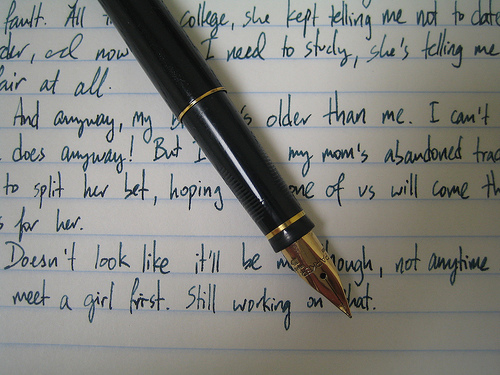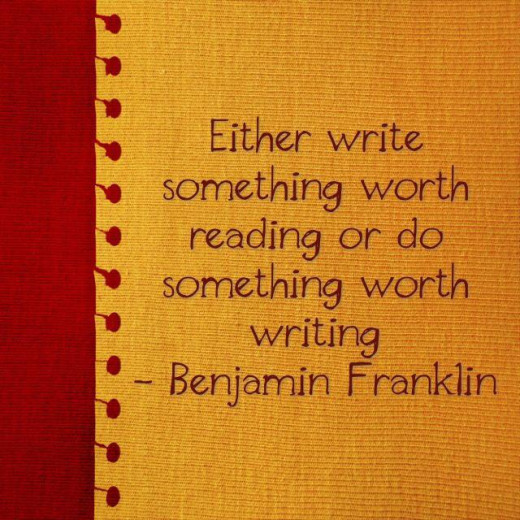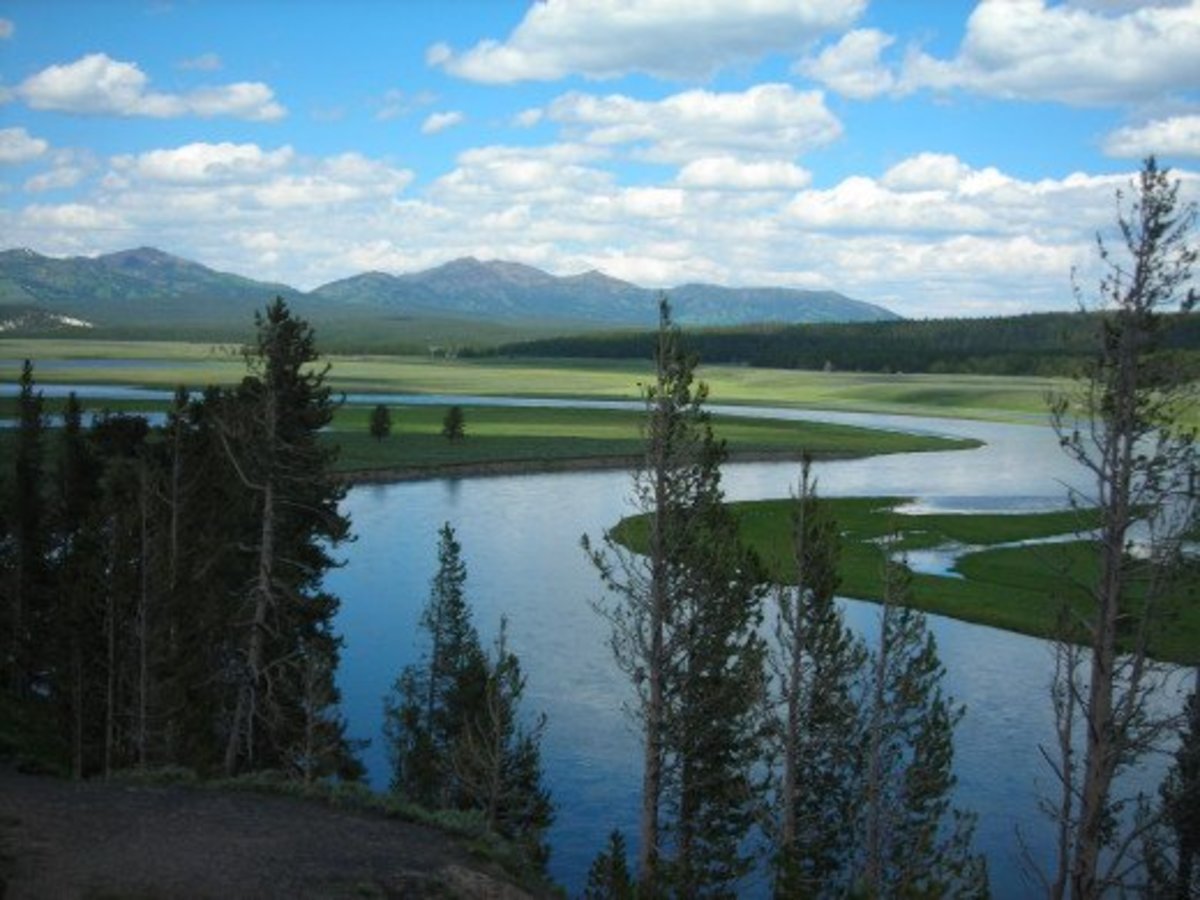- HubPages»
- Books, Literature, and Writing»
- Commercial & Creative Writing»
- Creative Writing
7 Tips for Writing Flash Fiction
What is Flash Fiction?
Flash forward to flash fiction, a form of fiction writing which is increasing in popularity day by day. Flash Fiction goes by several names including: Micro Fiction, Sudden Fiction, Fast Fiction and Short-short stories. It is a short form of storytelling, in which a writer must build a complete story in less than 1000-2000 words. However this criteria may vary from writer to writer or editor to editor. Some writers believe that a complete story told in 75 words or less is true flash fiction, while others believe that 100-500 words make a short-short story. Most magazines have a 2000 maximum and are favorable of shorter pieces. There are even twitter short story publishers, who only accept and publish 145 character short story tweets. As you can see, the guidelines to writing flash fiction are very hazy and flexible. Flash Fiction has only just begun to become popular among writers and publishers though it has been around for years. Many publications, online and in print, have shifted their focus to flash fiction. So why shouldn’t you too?
Micro Fiction is a great way to improve your skills for writing longer pieces, is challenging and fun. It can also help you to write better by forcing you to get rid of the clutter we put into our writing all the time. Below are some tips to get you started on your journey into the world of Flash Fiction.

Plotting a Flash Fiction Piece
Writing a complete story in less than 2, 000 words can be daunting. But in truth, though challenging, it is not as hard as one may think. Like any story, a short short must have a beginning, a middle and an ending. It also must have a conflict, climax, resolution and a character change. These elements are what make it a complete story.
The best way to begin a piece of flash fiction is to develop a main character and write the piece around them. Choose a conflict or problem and start in the middle of the action or at the climax. As you go through the story you can then reveal backstory or background information that ties into the current situation. At the end, you'll still need to resolve the problem or conflict that you established in the beginning. Now here's the thing, in order to make your piece a story and not just a scene, you must present a character change at the end. How does the resolution to the conflict or problem change your character? This is an important question as it will complete your piece and make it a story.
Below you'll find further tips and exercises for writing flash fiction.
Wordplay on Youtube: Short Stories Challenge
More Hubs on Writing
Tips for Writing Flash Fiction
- Picking a topic – Narrowing it down.
- When writing flash fiction, the smaller and more specific the topic the better. Look for precise ideas in broad topics and build on them. Take a topic like coming of age; narrow it down. Pick out some specific events that show the coming of age in young adolescents. For example: failing a class, standing up to a bully (or not), a girl’s first period, prom night or high school graduation. Now choose one of those events and write a story about it. - No long-winded introductions – Short
and sweet is key.
- It’s fast fiction, you don’t want to spend too much time on the introduction. Yes, you want to get as much background as possible but you don’t want to go over your word count and you don’t want to lose your reader. Try to fit everything you need in the first paragraph and then get on with your story. For example, a character’s background info can be worked into the story through flashbacks and memories rather than laying it all out in the opening paragraphs. Rope your readers in, then worry about background information. - Roping in your reader – Start in the
middle of the action.
- Begin right away with the action. Try to remember that flash fiction is usually a single scene in time; one moment that sticks out. Don’t describe more than you have to; let the reader fill in some of the blanks. This will keep them wanting more and in turn keep them reading your story. - Think like a camera lens – Focus on
a single moment or image in time.
- As I said this is meant to be one moment in time. Focus on one powerful image to base your story around. For example: a deserted town or a cresting river. Paint a picture with your words. - Don’t give your reader everything at
once – Keep the suspense going.
- It’s okay if your reader has no idea what’s going on in the majority of the story. Just tie it all together in the end with a nice bow. They’ll keep reading out of sheer curiosity and a wanting for understanding. This goes with roping in the readers. - Using common knowledge is helpful –
Reference telltale facts.
- If your story is part of something that is commonly known than references will save you time and words. Refer to historical events, location, etc. For example: say your story takes place in 1920s, a single word like prohibition or a phrase like economic boom, would reference that entire era. By doing this you give the reader a load of background information in a single sentence. - Give the readers a shock – Twist endings are
best for flash fiction.
- Unlike a novel or short story, in flash fiction there is simply not enough time or space to build up your story through its characters and background details. This can make it hard to come up with an ending that packs a punch for the readers. In this case, we can turn to the twist ending. Leave your readers with their mouth agape in surprise at the unexpected turn of events.

Flash Fiction Exercises
In one respect, Flash fiction in and of itself is a great exercise for writing longer pieces of literature. However there are exercises to help you master the brevity that is needed in short-short stories. Flash Fiction exercises teach you the importance of writing to a word count, avoiding clutter, word choice and usage, and organizing your thoughts. Below are just a few exercises that I like to use when writing flash fiction.
- Pick 10 people you know and write a one sentence description of them.
- Write a 500 word autobiography.
- Write a 500-1000 word short story about a picture.
- Create a scene where a character will face a life-altering moment. No more than 1 page, front and back.
- Write a 10 word sentence that sums up your day.
These are only a few that I enjoy and that really help me. You can find tons more just by surfing the internet or visiting your local library or bookstore.
Flash fiction if fun and challenging. It’s gaining popularity faster and faster every day. Magazines are very favorable when it comes to micro fiction submissions. Not to mention writing short-short stories can improve your skills for longer pieces. So challenge yourself and have fun trying something new.
What do you think is a good word count range for Flash Fiction?
© 2011 Skylar Spring








